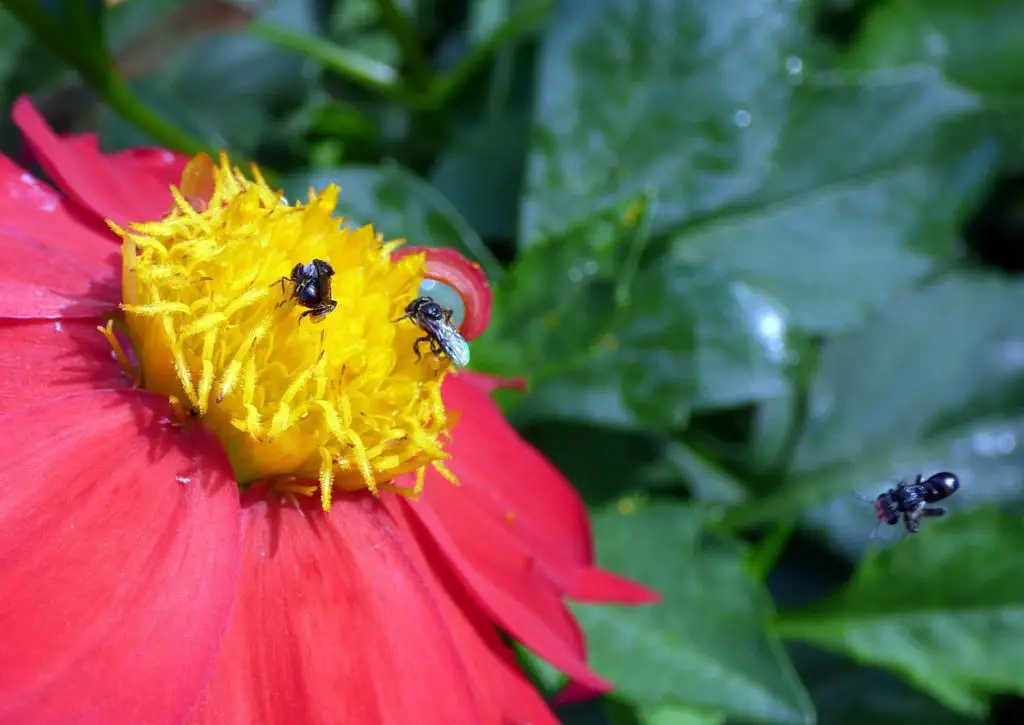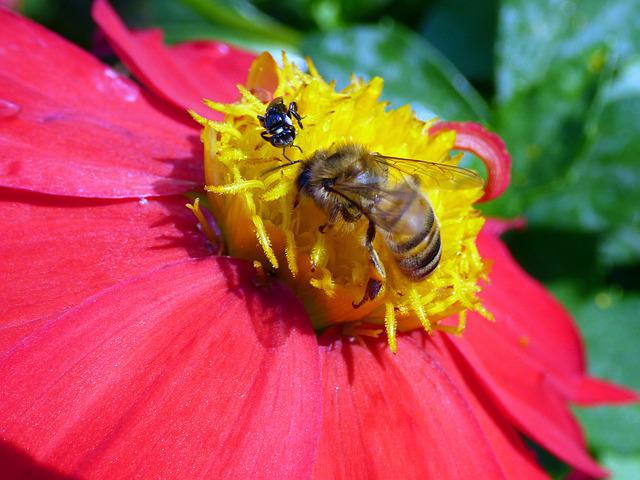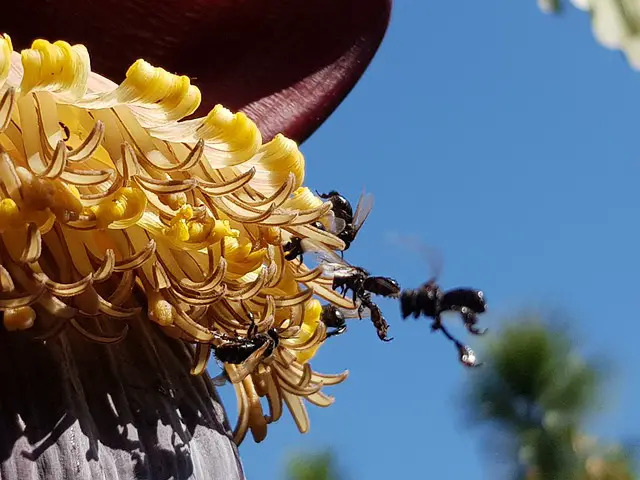Last updated on September 21st, 2023 at 12:18 pm
Stingless bees are a large group of species all comprised within the tribe Meliponini of the greater Apidae family and are often referred to as stingless honeybees.
Stingless bees are eusocial just like honeybees meaning they display a high level of social intelligence displayed by females raising young with the support and cooperation of non-reproductive members of the society.
Appearance
The appearance of stingless bees varies greatly amongst the different species.
Australia is home to 14 species of stingless bees, these species include the sweat bee, Australian native honeybees, and sugar bag bees.
All of these species are relatively small in size with a distinct black coloring.
They have hairy hind legs to collect pollen just like the western honeybee.
Unlike Australian stingless bees, the Brazillian species vary massively in size color, and appearance making identifying individual species much harder.
Male vs female stingless bees
A stingless bee’s sex is determined by chromosomes.
Female stingless bees often referred to as workers will receive two sets of chromosomes, one from the Queen of the colony and one from the drone she mated with.
Male stingless bees often referred to as drones will only receive one chromosome, the result of a queen laying unfertilized larvae.
How does a female stingless bee become a queen?
Unlike honeybees where a queen is fed a special ‘royal jelly’ during the larval stage, stingless bee queens are predominantly created from a surplus of pollen.
This means any female bees that consume large amounts of pollen have the potential to become queens when they reach maturity.
Queens that reach maturity will leave immediately to mate but unlike honeybee queens, few of these virgin queens will survive their mating flight.
The overproduction of queens allows for this and ensures that at least some of the new queens will be able to mate and safely return to find a new nest.
How do stingless bees make new nests?
Stingless bee workers will leave the primary nest in a procession in search of a new nest site for a virgin colony.
When they find an appropriate location they will begin to build the new nest in the hope that a virgin queen returning from her mating flight will opt to take up residence in the new nest.
The workers in the initial exploratory procession will normally stay on at the new site to assist the queen and develop a new nest, furthering the species and ensuring their continued survival.
Stingless bee honey production
Some but not all species of stingless bees are capable of producing honey similar to western honeybees.
Throughout Australia stingless bees are used for their honey production capabilities but on a much smaller scale than honeybees.
Australian stingless bees are equipped with enlarged hind legs covered in tiny hairs that allow them to store excess pollen while foraging for resources.
They also collect nectar which they store in an extension to their gut called a crop.
The bees will then begin a process called ripening which involves passing the nectar from each mouth part, slowly dehydrating the nectar.
Eventually, this slow process of dehydration will increase the sugar content and remove excess moisture turning the nectar into honey over time.
The sugar content of stingless bee honey is much lower than traditional honey leading to a more viscous substance and shorter spoiling times.
Interestingly a study in 2020 revealed that some species of stingless bees produce honey with trehalulose sugar.
This sugar has a much lower glycaemic index or GI than traditional honey making it a great alternative for people who suffer from diabetes or want to avoid tooth decay.
Brazillian stingless bees unlike their counterparts can actually outperform honeybees when it comes to honey production per individual worker.
Colonies consisting of no more than 1000 bees can produce up to 4 liters or a gallon of honey each year.
Stingless bee honey is considered much more valuable due to its lower sugar levels and medical benefits.
This can see stingless bee honey sell for anywhere between 10-20 times more than traditional honey produced by the western honeybee.
Stingless bee behavior
The majority of stingless bees are very docile making them perfect for urban beekeepers.
Due to their passive nature, lots of hobby beekeepers will opt to house stingless bees purely to ensure the species’ survival rather than for gathering honey of any kind.
Stingless bees are also prolific pollinators so keeping bees can be a great way of ensuring the growth and success of local flora.
Stingless bee soldiers
Much like ants and termites, stingless bees have been observed to have a soldier caste within some colonies.
The soldier caste is charged with patrolling and defending the nest’s territory.
Currently, 10 species have been observed to have a separate soldier caste with differing physical characteristics primarily a larger size and different coloration.
While stingless bees are unable to sting they are equipped with large mandibles that can provide a powerful bite to intruders.
Vulture bees and meat bees
Vulture bees often referred to as meat bees are a small caste of stingless bees in the genus Trigona with a fascinating evolutionary development.
Rather than pollen or nectar, they have developed a way of gaining sustenance from meat or flesh.
*Some of the behavior of Vulture bees can be quite unpleasant so read on with caution.
Much like maggots vulture bees will opt for the easy route to resources.
This normally means entering carcasses through the eye sockets due to very little resistance from the eyeballs membrane compared to most animals’ thick hides.
They will set about gathering fresh meat from within the carcass, excreting saliva before consuming any meat, and storing it in the crop within their gut normally reserved for harboring nectar.
When the worker bee returns to the nest it will secrete the meaty substance stored within its crop, process it, and store it in small containers ready to be fed to the maturing larvae.






